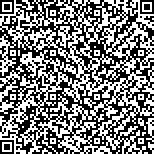本文已被:浏览 1262次 下载 1445次
Received:December 20, 2016
Received:December 20, 2016
中文摘要: 针对两信息系统间的互操作问题,提出了一种基于多色集合理论的系统互操作形式化研究的方法,给出了基于多色集合理论的两系统间的互操作研究步骤.首先,介绍多色集合理论并对其围道进行分割以体现研究对象的静态属性和动态性质,并给出单元素多色集合的概念及其聚合运算;其次,根据多色集合理论及其扩展,给出了两信息系统间的互操作研究步骤:分别对互操作的两系统进行单元素多色集合描述,然后再通过两系统的单元素多色集合的并运算来体现整体.最后,通过医疗领域的医疗信息系统HIS与检验信息系统LIS间的互操作为实例验证该形式化方法的有效性.
Abstract:Aiming at the problem of interoperability between two information systems, a formalized method about interoperation research based on polychromatic sets theory is proposed, and the research steps of interoperability between two systems based on polychromatic sets theory are given. Firstly, the polychromatic sets theory is introduced and its contour is segmented to reflect the static and dynamic properties of the objects. The concept of single element polychromatic sets and its aggregation operation are given. Secondly, according to polychromatic set theory and its extensions, the research steps of interoperability between two information systems are given. The interoperability of the two systems are described in a single element polychromatic sets, and then the whole entity of interoperation is reflected through the union operation of two single element polychromatic sets. Finally, the validity of this formalized method is verified by the interoperability between hospital information system (HIS) and laboratory information system (LIS).
keywords: interoperability system interoperability polychromatic sets theory single element polychromatic sets
文章编号: 中图分类号: 文献标志码:
基金项目:贵州省科学技术基金(黔科合J字[2012]2356号)
引用文本:
杨敏,王晓华,冉梅梅.基于多色集合理论的两系统间互操作方法.计算机系统应用,2017,26(9):128-134
YANG Min,WANG Xiao-Hua,RAN Mei-Mei.Interoperability Method Between Two Systems Based on the Polychromatic Sets Theory.COMPUTER SYSTEMS APPLICATIONS,2017,26(9):128-134
杨敏,王晓华,冉梅梅.基于多色集合理论的两系统间互操作方法.计算机系统应用,2017,26(9):128-134
YANG Min,WANG Xiao-Hua,RAN Mei-Mei.Interoperability Method Between Two Systems Based on the Polychromatic Sets Theory.COMPUTER SYSTEMS APPLICATIONS,2017,26(9):128-134


